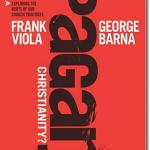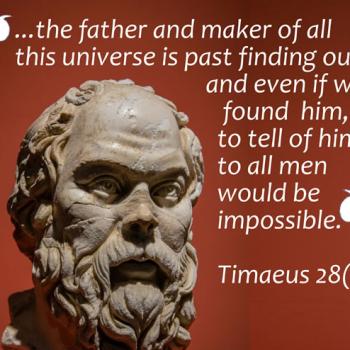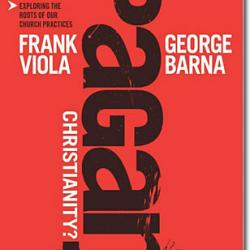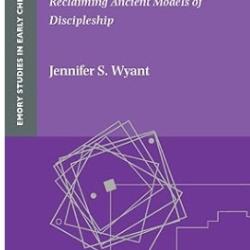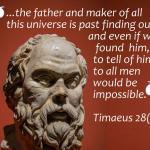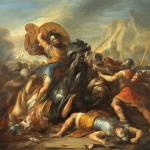Historical Errors In Pagan Christianity By Frank Viola
In my introduction I mentioned five historical errors made by Viola that are critical. An underlying critique for me is Viola’s use of footnotes, but rather than focus on this I am going to point to specific errors. Almost ALL of Viola’s errors include either poor footnotes or significant errors IN the footnotes. Yet for the average reader, the 700+ footnotes alone provides a cloak of scholarship.
Is Constantine Responsible for Christians Meeting in Church Buildings?
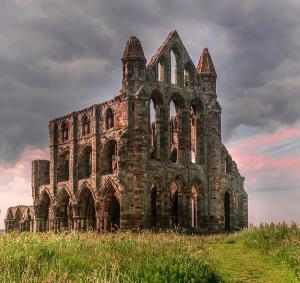
In Chapter two (pp.11-12) Viola makes several statements (and cites others) to imply that Christians only met in private houses. What drives this theory is the almost hidden anti-Constantine view of early Christian history.
He cites Graydon Snyder as an authority on the matter, but Snyder’s quote is historically incorrect. Snyder was a good scholar, but the volumes Viola cited were written in 1985 and 1991. A good deal of archaeological evidence/research has been uncovered in the last 30 years. Yet Snyder is cited as saying,
Nor is there any extant church or basilica that certainly was built prior to Constantine.
Graydon Snyder, Ante Pacem, p.128
There are a few issues with Viola citing Snyder here. First, he gets the page number wrong and does not accurately quote Snyder. This is nothing huge, but illustrates some of the problems in Viola’s attempt to present scholarly research as a way to convince readers. [-1-]
I quickly thought of 6 historical data points and archeological facts that show this statement by Snyder to be a ridiculous claim:
Two Archaeological Digs Uncovered Two Second Century Church Buildings
1. The archaeological discovery of the earliest known building devoted to Christian use in eastern Syria around 240AD, the Dura-Europos home church. This was a private home that was converted into a “church.”
In a footnote Viola minimizes Dura-Europos, “It was simply a private home remodeled as a Christian gathering place.” (p.15) Viola makes it sound like this “building” continued to be someone’s private home…with a baptismal pool. I guess the family used the baptistery as a bathtub!
Michael White (who is also cited by Viola) states, “The Dura Christian building is a true [house church], insofar as it was a converted private house, which after remodeling ceased to be used for domestic functions.” [-2-]
2. Another archaeological dig in Israel has uncovered yet an earlier church meeting hall in a second century Roman outpost. The Megiddo Prayer Hall “church” is dated at around 230AD by coinage found in the structure.
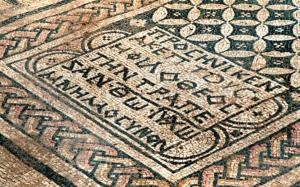
The “chapel” had a beautiful mosaic floor (see photo) with a marked spot for a Eucharist table. While this was not a stand-alone church building, it certainly was a “special” place dedicated for Christians to meet for worship and NOT a private house.
The journal article on this discovery is dated 2007. If Viola had just done a basic Google search he may have saved himself from making such definitive and ignorant statements. [-3-]
Fourth Century Writings that Speak of Church Buildings in the Third Century
3. Hans Lietzmann, famous German Church Historian and professor at the University of Berlin writes about the period after Emperor Gallienus issued his edict of partial tolerance (cir. 260-261AD) which restored confiscated churches to their rightful owners allowing the church to enjoy a time of peace and growth:
No wonder that the old meeting places were now not big enough for the public worship of the increasing multitudes, and everywhere new and larger churches were built. Nor is it surprising that scarcely a trace of this building activity has survived to the present day. [-4-]
Where did Lietzmann get this idea? From church historian Eusebius, referring to the period of “peace” from around 270-295AD!
How could one describe those mass meetings, the enormous gatherings in every city, and the remarkable congregations in places of worship? No longer satisfied with the old buildings, they raised from the foundations in all the cities churches spacious in plan. HE 8.1.3-5
The modern archaeological discoveries seem to be validating this report by Eusebius. This return of confiscated property and then, “No longer satisfied with the old buildings,” (citing Eusebius above) a surge of building some kind of meeting place is happening 50 years prior to Constantine.
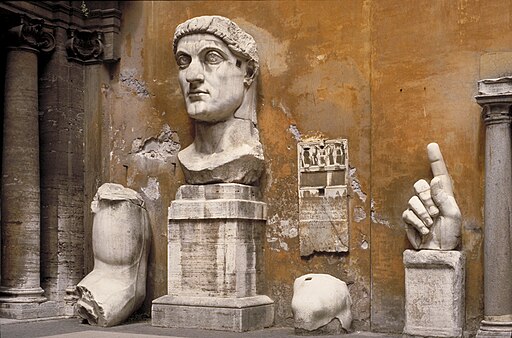
In addition to this, we have another clear literary record showing that Christians had buildings for worship before Constantine came to power. Both Lactantius and Eusebius record the beginning of “The Great Persecution” under Diocletian in 303AD. [-5-]
4. Eusebius writes about “places of worship being thrown down…to the foundations.” Then he relates the second edict that started in Nicomedia: “…commanding that the churches be leveled to the ground and the Scriptures be destroyed by fire…”
5. It appears that Lactantius was present when the great church in Nicomedia was destroyed (I will use ellipses for the sake of brevity):
…the prefect, together with chief commanders, tribunes, and officers of the treasury, came to the church in Nicomedia, and the gates having been forced open… the Holy Scriptures were…committed to the flames…
That church, situated on rising ground, was within view of the palace…Diocletian and Galerius stood, as if on a watchtower…disputing long whether it ought to be set on fire. The sentiment of Diocletian prevailed, who dreaded… lest…some part of the city might he burnt; for there were many and large buildings that surrounded the church. Then the Pretorian Guards came in battle array, with axes and other iron instruments, and having been let loose everywhere, they in a few hours leveled that very lofty edifice with the ground. Liber Mortibus 13
A few things to notice from the Lactantius text above:
1. The emperors could see the church from their palace balcony.
2. There were many and large buildings that surrounded the church.
3. The church is described as “very lofty edifice,” “cathedral” in another translation.
These aspects of the description by Lactantius tell us that the church in Nicomedia was more than a private home or a small, ordinary building. While the church in Nicomedia was certainly not a cathedral like what was built in the late Middle Ages, but it was a significant edifice.
So we learn here that Christians were already worshipping in church buildings in 303AD and the edict called for buildings to be destroyed all over the Empire (at least throughout that region). All of this happened before Constantine had his vision and converted. Nicomedia was a fairly large city and the church in Nicomedia appears to have been a fairly large facility. This lets us know how common Christian churches had become, that there would be a large church building within eyesight of the Imperial Palace. There must have been small church buildings all over the Roman Empire by this time…before Constantine.
Constantine would later relate that, he stood with Diocletian on the imperial terrace…and he watched as soldiers battered down the doors of the church in Nicomedia, lit fires to burn the sacred writings, and watched as Praetorian guards took axes and “leveled the lofty structure to the ground in a few hours.” [-6-]
It was very important to Constantine that the Empire pay the Church for all of the properties that were destroyed or taken during the persecution he witnessed under Diocletian.
6. In 313AD after Constantine becomes the Emperor of the West he meets Licinius, Emperor of the East in Milan and signs “The Edict of Milan.”
Constantine is pushing for religious freedom for all Romans.
He does, however, specify that confiscated buildings “appropriated for their religious assemblies” be restored to the Christians. In this edict we read:
Moreover, with respect to the Christians…concerning the places appropriated for their religious assemblies…all persons who have purchased such places, either from our exchequer or from any one else, do restore them to the Christians, without money demanded…and we will also, that they who have obtained any right to such places by form of gift do forthwith restore them to the Christians…All those places are, by your intervention, to be immediately restored to the Christians. [-7-]
Viola and Barna are wrong when they claim that Christians typically only used private homes prior to the Constantinian era. This article has presented five clear archaeological and historical data points that Christians had been using buildings (not just private homes) from at least the middle of the third century. Thus, Christians were building spaces specifically for Sunday worship at least 70 years prior to Constantine coming to power.
THIS is why I offer my criticisms of Pagan Christianity.
Early Christian History Matters.
________________
NOTES:
- Viola cites Snyder on page 12 where his citation leaves out “basilica” in Snyder’s work. Secondly, Viola fails to note that Snyder is actually citing L. Michael White in this statement. In addition, Viola’s citation (p.12,n12) references p.67 of Snyder’s work – the statement in actually on p.128.
- Michael Peppard, The World’s Oldest Church, (Yale University Press 2016), p.16, emphasis added. There is a diagram on page 17. See Google books [https://www.google.com/books/edition/The_World_s_Oldest_Church/shsvCwAAQBAJ?hl=en&gbpv=1&dq=dura+europos&printsec=frontcover].
- Vassilios Tzaferis, “Inscribed ‘To God Jesus Christ’: Early Christian Prayer Hall Found in Megiddo Prison,” Biblical Archaeology Review, Vol. 33, No. 2 (March/April 2007) [http://www.nbcnews.com/id/9950210/ns/technology_and_science-science/t/archaeologists-unveil-ancient-church-israel].
- Lietzmann, Hans, History of the Early Church: Vols. I-IV, ET by Bertram Woolf (London 1960). This citation is Vol.II, p.58.
- Eusebius, Church History 8.1-3. The lengthy citation is Lactantius, Of the Manner in Which the Persecutors Died 13.
- Odahl, Charles Matson, Constantine and the Christian Empire (Routledge 2010), 2nd ed., p.67.
- Liber Mortibus 48. This text was copied from:
https://earlychurchtexts.com/public/edict_of_milan.htm

Al Baker has served 20+ years as a pastor (university pastor and local church), was an adjunct then an associate professor of Philosophy and Religion at Saint Augustine’s University in Raleigh NC for six years.
After serving as the university pastor of Chi Alpha (Assemblies of God) at the University of Alabama for 11 years, he moved his family to St Andrews, Scotland. In 2001 Al Baker completed his Ph.D. in Early Church History at the University of St Andrews.
In 2005 he started churchhistory101.com, surpassing 1 million unique visitors in 2016. On that site there are several articles on different aspects of early Christianity and two PDF eBooks you can download.


